I have been using the Covid-19 symptom tracker since its launch late March as the pandemic started to take hold in the UK. It seemed to make perfect sense to try and gather as much information as possible from the population and to learn from it. There are so many “unknowns” about this new virus and the speed with which has afflicted Europe is unprecedented.
The tracker is an app on a smartphone and requires you to check in each day with how you are feeling. If you feel perfectly well that is all that you report. If you are not well you are prompted by a series of questions as to what symptoms you are experiencing. It all takes just a few minutes.
I am usually fit and healthy but had a day a week ago when I was unusually tired and fatigued with a headache for part of the day. I reported this on the app. The next day I was feeling tired but otherwise ok. A few days later I received an email and text message inviting me to take a Covid-19 test as my particular symptom reporting had been analysed and they needed to know if I tested positive for the virus. The test had to be done immediately that day to be effective.
I went online as instructed and booked myself into the nearest test centre 11 miles away. I had no option on time slot as there was only one left. I briefly read the instructions for booking, sent to me by email, and printed off the bar code required for registration at the test centre. The only other requirement was photo ID and hand sanitiser.
I arrived early and found the test centre to be a car park behind the High Street. Two men in yellow ‘high viz’ jackets waved me into the car park. I knew I was required to keep my car window closed for safety of the helpers but of course had forgotten they would be fully masked up and impossible to lip read! Fortunately, I had pen and paper with me so wrote in large letters….
“ I am deaf and cannot hear you”. At this point, I was promptly waved on to the next stage of the test.
There are 4 key stages:
Receive the test packet:
Uniformed and masked army personnel were stationed at each point. I was told to wind the window down a very little bit, which helped with hearing the instructions, told to sanitise my hands and was then handed a packet with the test swab, bar code labels and written instructions.
Instruction for the test:
The next person, also fully masked, read my sign and allowed me to crack the window a bit so I could just hear him. I offered to read the instructions instead but they clearly have time limits and talking it through was preferable. I then closed the window and applied more hand sanitiser as instructed.
Perform the test:
Enclosed inside the car, I performed the test swab. The written instructions were a useful reminder as I never fully trust my hearing and was a bit concerned I may have misheard something. More hand sanitiser and then the test tube was double bagged and sealed.
Drop off test:
I then drove up to the exit and was approached by the last person in the process. The window was opened sufficient only to drop the bag into a crate. Finished.
What did I learn?
The whole process was slick and efficient and took approx 20 minutes. The army personnel were not prepared for my deafness but compensated really well by speaking loudly and clearly even through the face mask. It would have been more difficult to communicate with them if I had not had my written sign to explain I couldn’t hear well.
I wish I had taken the time to prepare better and to read through what would be required at the test before leaving home. It would have helped compensate for my lack of hearing. However, I had not expected to be called for testing from simply using the app and especially not the urgency of it – it needed to be that same day and I only had 1 hour in which to get to the testing point.
Having to keep the window closed added to the difficulty in hearing but was of course essential for the safety of those running the testing centre. I could be highly contagious without realising it and they are at risk. Even someone with good hearing might struggle a bit to hear well in the same situation.
If you should need to take the test please go prepared and be very up front about your ability to hear. This is not a time to be shy about your hearing. If I had thought about it in advance I would have used a speech-to-text app on my phone to assist my hearing.
(If you are not required for urgent testing then try to book an ‘at-home’ test which is delivered to you and collected by courier. This option fills up fast.
Take hand sanitiser, your phone, the bar code you are sent and pen and paper. Stay calm and do not worry. The personnel attending will try and help as best they can.
The results of the test came through 2 days later by text and email. NEGATIVE. Happy days!
Download the App
You can help fight COVID-19 too by aiding research



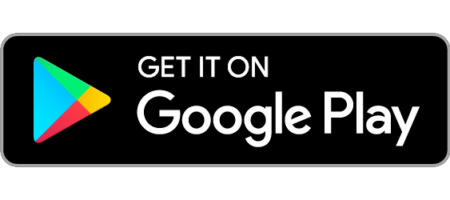

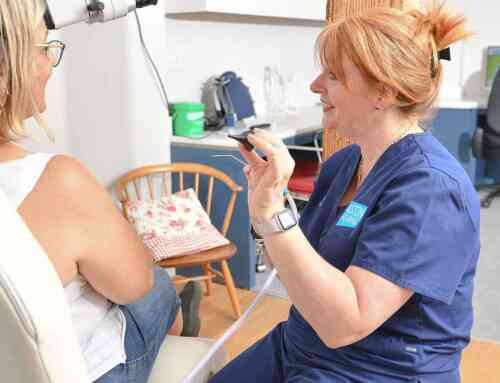
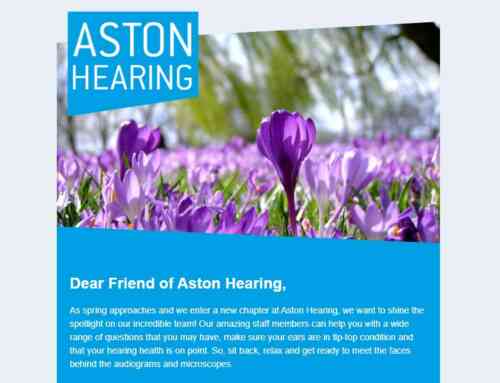
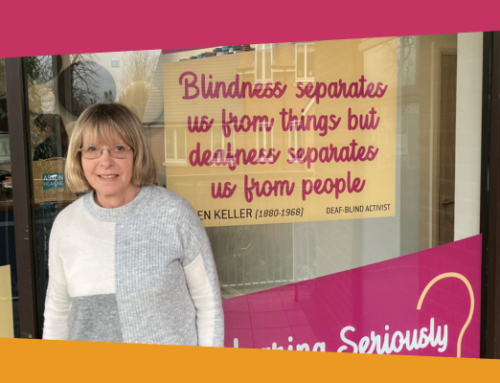
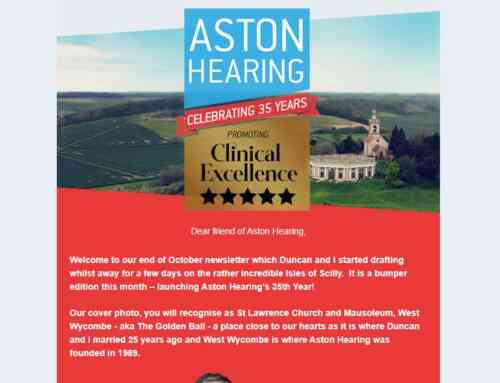
I read Nicky’s experience with her Covid 19 test experience with some sympathy at the testing Center. I would have experienced similar difficulties. I too have learnt BSL sign Language up to stage 2. If someone at the center could sign ,this would really have been helpful to Deaf, Deafened people and to Nicki.I note Nicki’s hints for preparation for the test. It was good that there was written instruction as well. Thank you Nicki. DorothyI read Nicky’s experience with her Covid 19 test experience with some sympathy at the testing Center. I would have experienced similar difficulties. I too have learnt BSL sign Language up to stage 2. If someone at the center could sign ,this would really have been helpful to Deaf, Deafened people and to Nicki.I note Nicki’s hints for preparation for the test. It was good that there was written instruction as well. Thank you Nicki. Dorothy